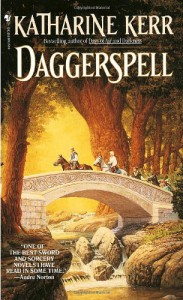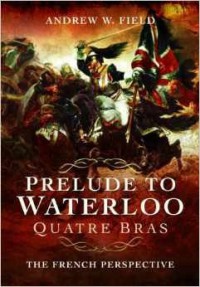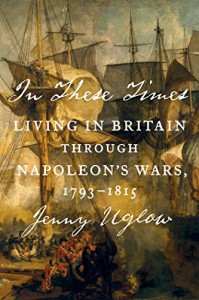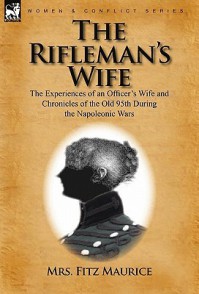So.... Nicky?
Pretty much all books, history, science, civil rights, anime, travel, or, you know, baby animals.
[ United Empire Loyalist monument, unveiled on Empire Day, 23 May 1929, at Prince’s Square on Main Street East in Hamilton, Ontario. Source Saforrest ]
One of the strong influences on my novel The Spanish Patriot was learning about the American colonists who did not wish to separate from Britain during the revolution and civil war of the late 1700s. From what I’d learned in school, I assumed there were maybe a few grump-headed Loyalists, some of whom joined the British to fight against the rebels (Benedict Arnold!), but then after peace was declared everyone quickly fell back into happy coexistence.
Not so much.
More on my site: http://nickypenttila.com/road-to-corunna-american-loyalists/ (Sorry for the link; Google discounted my website before b/c of "repeat posts" so now I post in full only on my site.)
Calls for war sound the same, even 200 years on. On my blog, the post "Prelude to Corunna: Calling All Patriots" is first in a series examining themes in my new book, The Spanish Patriot.
Daggerspell (Deverry Series, Book One)
 Impressive structure, using the idea of reincarnation and the need to pay off your debts from other pasts to show us "souls" across centuries of time. Some do pay off their debts, others grow in surprising ways, but all start from a sort of stock box of standard fantasy characters who are kept at rather a distance from the reader.
Impressive structure, using the idea of reincarnation and the need to pay off your debts from other pasts to show us "souls" across centuries of time. Some do pay off their debts, others grow in surprising ways, but all start from a sort of stock box of standard fantasy characters who are kept at rather a distance from the reader. World-building is great, as is how the author carries salient character detail across time and in new bodies (although not crossing gender -- maybe in another book in the series?). I picked it up because someone recommended it as having a strong female character, and it does, by the end--one timeline is her coming-of-age story. I'm glad I read this one (book one of an extended series), but I don't think I'll be continuing to book 2.
Technogenesis
 Good pacing and surprisingly solid in both brain science and tech progress for being more than a decade old. I enjoyed spending time with Jasmine and the people she meets and puzzling out the conundrums their (and our) networks bring up. Adventure and technical aspects most entertaining; a late-breaking romance didn't seem essential to the story. Sorry it is out of print; there aren't so many strong women (or half-Indian, half-Irish!) in starring roles in SFF.
Good pacing and surprisingly solid in both brain science and tech progress for being more than a decade old. I enjoyed spending time with Jasmine and the people she meets and puzzling out the conundrums their (and our) networks bring up. Adventure and technical aspects most entertaining; a late-breaking romance didn't seem essential to the story. Sorry it is out of print; there aren't so many strong women (or half-Indian, half-Irish!) in starring roles in SFF.
24 Hours at Waterloo: 18 June 1815
 Rip-roaring account of the day of battle, arranged in blocks of time roughly from midnight to midnight. Eyewitness accounts describe all the armies and many sections of the battlefield, especially as they fall under fire. The book is organized for emotional impact: We leave the ridge just as things are turning and move to another site of battle, leaving that one just as things are turning, which really keeps the reader reading.
Rip-roaring account of the day of battle, arranged in blocks of time roughly from midnight to midnight. Eyewitness accounts describe all the armies and many sections of the battlefield, especially as they fall under fire. The book is organized for emotional impact: We leave the ridge just as things are turning and move to another site of battle, leaving that one just as things are turning, which really keeps the reader reading.This is not a dry read--the accounts from soldiers and officers in the midst of action are gritty and visceral, and not for the faint of heart or stomach! Of the Waterloo books I've read recently, this is the one that made the physical aspect of the battle most vivid, from the awesome sights and sounds, rumbles and smells, to the mundane tasks of how to sleep in a downpour and where to relieve oneself.
I found the maps, which show where the major people quoted in the text were on the field at the time, both useful and frustrating: Many times it seemed the map one map back was the one that should have been with the chapter I was reading. The way the citations are organized, with all cites for a paragraph grouped together in one note, made it harder for me to determine which reference I wanted to look up later.
Unlike a lot of Waterloo books, this one could be an OK e-book read as the sentences aren't super-dense and there are no pictures; just bookmark the maps because the one you want might not be the one that's closest to that chapter. Also note for e-reading that a section in the endnotes, "Some of the Voices from Waterloo," gives short biographies of many of the people who are quoted; if you forget who somebody is, you can quick check there.
Prelude to Waterloo Quatre Bras: The French Perspective
 Like Field's earlier Waterloo: The French Perspective, this book looks at the fighting around Quatre Bras (2 days before Waterloo) from the perspective of the French. Unlike the earlier book, there are far fewer first-person accounts of this battle -- Waterloo's deep shadow? In terms of strategy, though, the French fight against the allied army at Quatre Bras and their simultaneous battle against the Prussians at Ligny were critical, and I now see far better why.
Like Field's earlier Waterloo: The French Perspective, this book looks at the fighting around Quatre Bras (2 days before Waterloo) from the perspective of the French. Unlike the earlier book, there are far fewer first-person accounts of this battle -- Waterloo's deep shadow? In terms of strategy, though, the French fight against the allied army at Quatre Bras and their simultaneous battle against the Prussians at Ligny were critical, and I now see far better why.As well as the excerpts from memoirs and personal accounts, the text includes reprints of some of Napoleon's orders and other missives, written by his commanders or by himself. Since many questions revolve on who was ordered to do what when, reading the actual wording (often strikingly vague but undoubtedly patriotic) illustrates what commanders in the field were working with. Still, it's a drier read than the Waterloo book, though many of these excerpts do carry juicy detail.
The maps are helpful, and the photos include present-day images of the land, buildings, and roads the battle was fought on. Also interesting to see how many times (3? 4?) Wellington was nearly caught or hurt this day.
Children at the Battle of Waterloo
 History intended for young people, roars along with some interesting detail but also includes stereotypes and assumptions that have been debunked/disputed about abilities and actions of Belgians, Prussians, French, and British. No notes or bibliography, so not recommended for research.
History intended for young people, roars along with some interesting detail but also includes stereotypes and assumptions that have been debunked/disputed about abilities and actions of Belgians, Prussians, French, and British. No notes or bibliography, so not recommended for research.
Dancing into Battle: A Social History of the Battle of Waterloo
 Very fun read, and good start on the history. Recommended for writers who need story ideas ;-)
Very fun read, and good start on the history. Recommended for writers who need story ideas ;-) Good use of first-hand quotes (letters especially) and good notes and bibliography. A little bit of repetition between chapters, as if the author thought people would dip in and out more than read straight through.
Beaux, Ballrooms, and Battles: A Celebration of Waterloo
 Nine stories of romance highlighting Waterloo, in sweet Regency style. I liked best Folie Bleue by Victoria Hinshaw, which features an older lady's telling her story of lasting love that started in Brussels. Not a Close Run Thing at All by David W. Wilkin also uses reminiscence to good effect, while Copenhagen's Last Charge by Heather King uses humor to leaven the horrors of war.
Nine stories of romance highlighting Waterloo, in sweet Regency style. I liked best Folie Bleue by Victoria Hinshaw, which features an older lady's telling her story of lasting love that started in Brussels. Not a Close Run Thing at All by David W. Wilkin also uses reminiscence to good effect, while Copenhagen's Last Charge by Heather King uses humor to leaven the horrors of war.
A Civil Contract
 For me, Heyer books are all about discovering character through dialogue, and this is just as rich as the others. Right now, though, I've been reading to see how she uses history in her stories, and this one is a little weaker in that respect--the details are sharp as ever but they don't really mean much to the story or push the characters' growth. This story could have been told anytime in wartime when the stock market is volatile.
For me, Heyer books are all about discovering character through dialogue, and this is just as rich as the others. Right now, though, I've been reading to see how she uses history in her stories, and this one is a little weaker in that respect--the details are sharp as ever but they don't really mean much to the story or push the characters' growth. This story could have been told anytime in wartime when the stock market is volatile.When Jenny becomes pregnant (a logical event when one marries to continue a dynasty), I was shocked. The couple still spoke to one another at such a remove that I couldn't imagine they had ever shared "pillow talk." Also, for me, Dev came off as yet another selfish, self-satisfied protagonist while Jenny, a strong woman, seemed to be using her strength to convert herself into a dishrag.
The "love the one you're with" story is tricky in romance; I'm glad she went for it with such honesty. I wish we (as romance writers and readers) would allow ourselves the same range these days.
In These Times: Living in Britain Through Napoleon's Wars, 1793-1815
 Whirligig tour of UK during wartime; great range, less depth (on purpose). Good basic review of the period. I like that even with a cast of thousands we return to certain families as the years pass and observe events as they affect people all along the social strata. It does get to feel breathless at times; I'd recommend you take short breaks between sections if your memory is good enough to keep the central families in mind through the break.
Whirligig tour of UK during wartime; great range, less depth (on purpose). Good basic review of the period. I like that even with a cast of thousands we return to certain families as the years pass and observe events as they affect people all along the social strata. It does get to feel breathless at times; I'd recommend you take short breaks between sections if your memory is good enough to keep the central families in mind through the break.Huge respect for how many memoirs, diaries, letters, newspapers, and business papers she sifted through to find great quotes and enlightening stories. I treasure her bibliography and notes ;-) Scores of illustrations; helpful and important to the stories.
Marriage and the British Army in the Long Eighteenth Century: 'The Girl I Left Behind Me'
 Dissertation-y; with a lot of repetition: "I'm going to argue this, I'm arguing this, I've argued this." Argues that despite official rules at this time in the military against marriage, the practice continued and showed benefits to the military. Discusses upper-, middle- and lower-class marriages.
Dissertation-y; with a lot of repetition: "I'm going to argue this, I'm arguing this, I've argued this." Argues that despite official rules at this time in the military against marriage, the practice continued and showed benefits to the military. Discusses upper-, middle- and lower-class marriages.Some great details and anecdotes, such as the table of how many wives "recognized" by regiment in 1830 showing that despite the cavalry having a reputation as footloose and fancy free, in 1830 at least they had almost the most wives (proportionately).
Good for history and research; not so much for pleasure reading.
Diary of a cavalry officer in the Peninsular War and Waterloo campaign: 1809-1815
 Tomkinson was with the 16th (Queen's) lancers and often seconded to intelligence officer Edward Cocks. Injured and shipped home in 1809, once he returns he's with the army through Waterloo. Great maps and detail of military action; he did not like all the officers and can explain why some battle decisions were bad. Not one to talk about his feelings, though, and while he's careful to say where they were on what day there's not so much as I would wish about non-fighting life on the campaign. Wish he would have expanded on some of the parenthetical "circumstances" he glosses over: "(Circumstance of major Archer and some officers of the 16th sleeping in a room at the Quinta de Torre with a dead Frenchman.)," for one.
Tomkinson was with the 16th (Queen's) lancers and often seconded to intelligence officer Edward Cocks. Injured and shipped home in 1809, once he returns he's with the army through Waterloo. Great maps and detail of military action; he did not like all the officers and can explain why some battle decisions were bad. Not one to talk about his feelings, though, and while he's careful to say where they were on what day there's not so much as I would wish about non-fighting life on the campaign. Wish he would have expanded on some of the parenthetical "circumstances" he glosses over: "(Circumstance of major Archer and some officers of the 16th sleeping in a room at the Quinta de Torre with a dead Frenchman.)," for one. Available online at https://play.google.com/store/books/details?id=j4BJAAAAMAAJ&rdid=book-j4BJAAAAMAAJ&rdot=1
The Rifleman's Wife: The Experiences of an Officer's Wife and Chronicles of the Old 95th
 As per the description above, this is mainly the story of a Rifleman’s wife *after* the Napoleonic war, the years 1827 to ’31, but the last section does contain ripe anecdotes from the Peninsular campaign, including the battles at Ciudad Rodrigo and Vittoria. This is a memoir, though, so the Rifles are All Good and whatever bad parts of memories have been left out. Also, like memoirs by military men at this time, it feels rather impersonal.
As per the description above, this is mainly the story of a Rifleman’s wife *after* the Napoleonic war, the years 1827 to ’31, but the last section does contain ripe anecdotes from the Peninsular campaign, including the battles at Ciudad Rodrigo and Vittoria. This is a memoir, though, so the Rifles are All Good and whatever bad parts of memories have been left out. Also, like memoirs by military men at this time, it feels rather impersonal.In the earlier sections of the book, she, her husband, two children, nurse, dogs, and baggage cross France on their way to his posting in Malta. The sail to Malta is a true tale of terror, including near-shipwreck. Their sail back home, though, is a happier adventure: They pass by a water-volcano as it is spewing to create “Graham’s Island,” of scientific-debate fame. That short chapter was so cool I reposted it on my blog, including a painting of their ship and the volcano-spout.
This memoir is also available as PDF via Google books; a machine translation text version (messy) is available at General ebooks.
Catherine Exley's Diary: The Life and Times of an Army Wife in the Peninsular War
 Catherine Exley’s memoir of the years she spent following the 34th Regiment through Portugal and Spain is gold: the only first-hand account (so far) of the Peninsular War by the wife of a common British soldier. It has great (and terrible) detail of daily life as a practially penniless camp follower. She wrote it as an older lady remembering, so names, dates, etc. are squishy, but the descriptions of endless marches, hard weather, hard times, and privation are gripping.
Catherine Exley’s memoir of the years she spent following the 34th Regiment through Portugal and Spain is gold: the only first-hand account (so far) of the Peninsular War by the wife of a common British soldier. It has great (and terrible) detail of daily life as a practially penniless camp follower. She wrote it as an older lady remembering, so names, dates, etc. are squishy, but the descriptions of endless marches, hard weather, hard times, and privation are gripping.She had no blood family when, at 26, she married Private Joshua Exley: “Oh! How I wished for a loving mother to counsel me.” At 30, she accompanied him and the 34th to Portugal, and with the campaign for four years. She bears and loses three children as infants while on the march; her clothes, ‘covered with filth and vermin', often went unchanged for weeks at a time; and she herself more than once almost dies from illness and starvation. Just the amount of walking she does, often with babes in arms, was exhausting to follow.
[July? 1812] We had three leagues further to advance, but I was so weary that I feared to undertake the journey. However, a sargeant kindly offered to carry my child for me on his knapsack, and I followed. The rain poured down the whole way, and the road was so bad that we walked above the knees in mire and wet. The sand got amongst my clothes, which, rubbing against my body, caused acute pain in walking. In this state, we encamped for the night.
The rain still came down in torrents, so that it was with the greatest difficulty any fire could be kept burning, the fuel was so wet. After many fruitless attempts, a cradle was sacrificed by one of the women, and with it a little fire was made. Some bran was found in a neighboring mill, with which a sort of porridge was made; but I could not eat any of it. Some boughs were cut down from the trees, and on these I reposed my weary limbs. Having neither tents nor beds, everyone was provided with a blanket only; the one which covered me was soaked with water.
We were to march at four [a.m.]. I rose so stiff and cold that I could scarcely put a foot to the ground. We halted after a march of two leagues, and soon after were surprised by the near approach of the enemy. When the alarm was given I was putting on a pair of regimental shoes belonging to my husband, having previously thrown aside a pair of worn-out boots, which had never been taken off since the first day of wearing, about three months before. I snatched up my boy, and, leaving everything else behind me, we crossed a river (which was very deep) three abreast. One woman who remained behind to pack up her property lost her life for refusing to surrender it to the enemy. [page 31]
Also very hard was her account of searching through a field of blackend corpses, seeking the body of her husband. She returns home thinking him dead. Luckily, a letter waiting there tells her he’s a POW, and later they are reunited and live long after.
There are so few diaries and memoirs by the many, many women who were wives, sutlers and canteen-owners, and other camp-followers that finding another (this text was just released in 2014) is huge for history lovers and novelists alike.
Along with the 35 pages of her diary are chapters by historians on the campaign, women’s roles in wartime, and other topics, including period images of the clothing and lifestyles of people like her. The two chapters on women in war are especially interesting; one, by Charles Esdaile is a very shortened version of his book, Women in the Peninsular War.
Women in the Peninsular War
 One of the few books I've found that explores the status and actions of women in the Iberian campaign: wives, camp followers, nuns, gentry, poor folk, and more. Esdaile's general survey fills a huge hole in my history shelf; especially useful to see how the stories I know (Agustina Zaragosa) were shaped in the retelling, especially for political and cultural reasons.
One of the few books I've found that explores the status and actions of women in the Iberian campaign: wives, camp followers, nuns, gentry, poor folk, and more. Esdaile's general survey fills a huge hole in my history shelf; especially useful to see how the stories I know (Agustina Zaragosa) were shaped in the retelling, especially for political and cultural reasons. Chapters include Matrons and Majas (the two top stereotypes); Baggages (camp followers, cantinieres, etc); Heroines (hard and soft resistance methods); Survivors (local peoples, rich and poor); Virgins (nuns). I especially enjoyed the first chapter, Images, which examines how paintings, etchings, plays, novels, and other media then and now contribute to our view of Spanish and Portuguese women. A short last chapter, Liberators, adds French and British soldiers' views; good but if you want more try The British Soldier in the Peninsular War by Gavin Daly.
Esdaile's main point is that the argument that all Spanish and Portuguese women were patriots first and foremost goes too far, and that they were proto-feminists farther still; the goal of most civilians was to survive and keep their families safe. Many actions that from one angle look heroic (firing a cannon when all around you are dead) look save-your-skin from another. Similarly with women who consorted with the French or the British; if their families were starving who is to say it was patriotism that caused them to flirt, or to spy, or to beg their husbands not to go to war.
Very useful -- and entertaining -- are the extensive notes for each chapter, as well as a deep bibliography. I have a long list of story ideas -- so many strong women! -- and detail notes now, not to mention a half-dozen more books/monographs to look for. I wish the notes were available online because they include hyperlinks to the many art examples in Chapter One and it's hard to type correctly an URL that goes four lines long.




